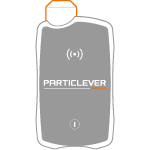Cosmetics


The main risk with respect to particles in the cosmetics sector comes from the use of dry raw materials in formulations. Many powders, of natural or synthetic origin, are transferred between containers, then incorporated into mixtures. Depending on the volume and processes, the exposure levels may vary greatly.
Raw materials that may pose a particular danger are metal oxide powders (like TiO2 or ZnO), some of which may be nanomaterials, as well as organic powders.
Some processes such as cooking and thermoforming may emit fine incidental particles.
Key questions
When handling a sizable quantity of powdery dry raw material, it’s practically impossible to prevent particles from being emitted. Simply place a PARTICLEVER Sampler in the emission zone (in the particle cloud if visible to the naked eye) and request an electron microscope observation. PARTICLEVER will be able to tell whether the substance contains nanoparticles.
In accordance with the recommendations of NIOSH (2011) and INRS (2016) and as a result of the likely classification as suspected carcinogens (class 2) by the ECHA due to the application submitted by France for a CMR class 1B classification, it is now wise to assess and potentially strengthen TiO2-related prevention strategies, whether or not it’s in nanoparticulate form.
It’s therefore helpful to launch an exposure-based assessment, quantifying the exposure by mass during the highest-exposure operations. The values will be compared to the recommended limit value of 0.3 mg/m3.



